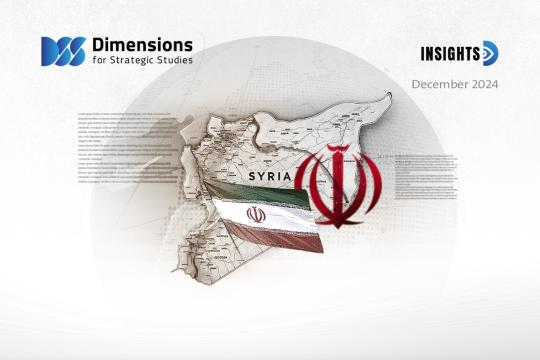
Lebanon's failure to pay its debts
2020-04-256815 view
preamble
Lebanon emerged from its civil war with official debts estimated at 3.2 billion US dollars. The amount continued to rise for various reasons ; most notably the taxes incurred on the debt, in addition to the large deficit caused by the “Electricity of Lebanon”, where the Lebanese government paid more than 11 billion US dollars from 1992 to 2011 in order to cover the company's debts. And if the interest is added to such deficit, the total will be more than 18 billion dollars paid by the Lebanese government to provide this service, and these amounts are fully borrowed.
At the end of last year, demonstrators took to the streets in most regions of Lebanon demanding real economic and political reform processes, which shed more light on the economic situation, and contributed to a political crisis which led to the resignation of government and disrupted life again. However, an unprecedented issue occurred after the new government took over. It was announced that part of the Lebanese public debt has not been paid at the beginning of March 2020 ; as it was supposed to be.
Lebanon is not the first country to be exposed to a debt crisis, as this type of crisis has its well-known economic history. For example, Argentina's debt amounted to more than $132 billion in 2001, leaving Argentina six times in default since its independence.
The state's failure to pay means that it will not be able to borrow again until it corrects its position, and its credit rating will be significantly affected in the future. Countries that have defaulted have been forced to find solutions to this crisis, such as resorting to borrowing from the World Bank in exchange for a specific reform prescription, rescheduling the debt or concluding agreements loop with other parties that bear repayment or part of it in exchange for certain political or economic concessions. Lenders resort to courts or negotiate anew about certain repayment terms.
First: the Lebanese debt : Review of events
The reality of the Lebanese public debt
Lebanon's gross domestic product (GDP) in 2019 amounted to nearly $58 billion, compared to more than $91 billion in debt. Lebanon has a current account deficit as well. This deficit has increased due to its being significantly affected by the Syrian economic crisis. By mid-2019, the Lebanese economy was characterized by several features : severe lack of confidence, uncertainty about the present and the future, conservative monetary policy, a significant contraction in the real estate sector, an increase in the population’s burden due to growth. Add to all that the entry of 1.5 million Syrian refugees at an average rate Unemployment 20%. Another problem was the increase in government spending on employees’ salaries. That is in addition to the cash reserve being depleted more than ever. With the burdens of the public debt, in addition to a very weak credit rating is (according to Moody: Caaa1) and Standards & Poor's and Fitch, (B-) this ment a degree of high risk.
There is one sector that can be excluded from the above and that is the tourism sector, which seems to have continued to function well, and even better than it was in 2018, where revenues increased by 12% from what they were in the first half of 2018, thanks to Lebanon’s reputation in the field of tourism. overwhelmed by difficult circumstances.
The evolution of the size of the Lebanese debt and its distribution among creditors
After the civil war in Lebanon, a $2.5 billion reconstruction plan was set up by the growth and Development Board. The World Bank lent Lebanon $225 million, and the borrowing process continued from several sources for the purpose of maintaining roads, and reconstructing water, health, and education sectors, and reforming various institutions. Due to insufficient aid and amounts received from abroad, the government resorted to Internal borrowing at high interest rates. Every year Lebanon had a deficit in its expenditures, which is greater than its revenues ; and therefore it resorted to borrowing again, until the debt rose from nearly 4 billion in 1993 to 70 billion in 2015.
Figure No. 1 shows the evolution of the Lebanese public debt from the post-war period until 2019. It is noted that the Lebanese public debt accumulated mainly in the period after the Lebanese civil war, where the borrowing was large until the beginning of 2000 in order to build the main sectors in the state, and also increased during the global financial crisis in 2008 and 2009, and recently the Syrian crisis has weakened Lebanon's imports and increased borrow.
With the exception of these increases, Lebanon's imports were always much greater than its exports, and its expenditures are in a continuous deficit, which necessitated one borrowing after another, at approximately equal rates annually, to spend on the main sectors of the state.
Figure No. (1)
The evolution of public debt since the post-war period until today (in billion dollars) :

3- Lebanon's main creditors
At the beginning of 2020, the Lebanese public debt amounted to about 91 billion US dollars. The Lebanese debt is divided into a government debt in local currency that constitutes 63% with a total value of (87,279 billion Lebanese pounds), and a sovereign debt in foreign currency of approximately 33 billion dollars : (50,871 billion Lebanese pounds). And this is distributed among creditors as in Figures (2) and (3).
As for the Eurobonds, which constitute the largest percentage, Lebanese commercial banks acquired 43% of them until the end of January 2019, while the share of foreign creditors is about 33%, while the Banque du Liban and local creditors hold the rest of the share. However, these bonds remained easy to trade, and the problem of selling them was raised. Outside the country by local banks during the past months after fear of default by the government.


Figure no. (3) Creditors in foreign currency
Governments 2%
Multilateral institutions 4%
Eurobonds 94%
We note that Lebanese banks have the largest share in the Lebanese public debt, whether in local or foreign currency. There are fifty commercial banks crediting the Lebanese state. Only ten of these banks carry more than 80% of the debt. These banks aspire behind the debt to the huge profits that they derive from the interests, as these 50 banks achieved an amount of more than two billion dollars in revenues of Europounds and the returns of government bonds in local currency in 2018. These banks use nearly two-thirds of their assets in government bonds.
The Banque du Liban comes as the most prominent creditor to the government, and it also takes its money from banks in most of them, as it issues certificates of deposit in foreign currencies. It is the true owner of the debt.
Foreign creditors hold more than $10 billion of the total foreign currency debt. Government-affiliated public institutions, such as the Social Security Corporation, subscribe to a portion of the bonds with a total debt of about $6 billion in local and foreign currencies, while individual creditors hold less than $1 billion, and local private institutions hold nearly $300 million. As for governments and official institutions, their debt does not exceed 2.5 billion US dollars, which are foreign currency debts from the World Bank, Arab funds and some European governments.
The dues in the coming period
Like any other debt, Lebanese debt is divided into three categories in terms of duration in general : short-term debt, long-term debt and medium-term debt. Only 2.2% of the total amounts borrowed in local currency is due in 2020, and 3.85% of the total debt is due in 2021 ; while more than 41% is due after ten years or more.
As for the maturity of foreign-currency bonds during 2020, the first of them was on the ninth of last March, with a value of 1.2 billion dollars, and Lebanon officially announced its inability to pay, and the second in April 2020 ; in addition to a maturity in mid-June, with a value of about 2.5 billion dollars. Lebanon has to repay this year, in the normal case, 4 billion US dollars, which does not seem to be met, but rather negotiated.
5. Political reactions
The day after Lebanon announced the suspension of debt payment, the Minister of Foreign Affairs of Lebanon stated that the positions of the Lebanese factions in attacking friendly and brotherly countries, would not be an official position for Lebanon.
Lebanon also held consultations with the International Monetary Fund, which was welcomed by all Lebanese factions with the exception of Hezbollah, which believes that the intervention by the Fund will mean controlling Lebanon. Hezbollah said that it will not accept submission to the Fund, as it believes that the Fund will interfere in issues affecting its economic interests in Lebanon. It still refuses such an intervention while other factions accept.
Second: The potential effects of the crisis on the Lebanese economy
After Lebanon announced the suspension of payment on debts, we can monitor a set of possible effects, although these effects relate to the economic situation in general and not only to the suspension, as the suspension appears to be a pivotal point and a reflection of other issues. The most prominent effects are:
lower creditworthiness
The credit rating is a degree that shows the extent to which the rating agencies judge the institution or the country with regard to its ability to pay its debts, that is, they measure the level of creditworthiness, and thus the agency reduced Lebanon’s creditworthiness from risky to high risk and then to default.
Since the start of Lebanon's recent crisis, international credit agencies have lowered Lebanon's credit rating more than once. Fitch lowered Lebanon's credit rating from (B-) to (CCC) in the middle of 2019 and then to (CC) in January of 2019. Moody's also rated the credit position as (Ca) meaning high risk, and Standard & Poor's as (CC) high risk.
The above ratings give an indication that the possibility of future borrowing will certainly be more difficult in principle, unless Lebanon implements economic reforms that restore confidence and raise it to the rating ladder.
2) Increasing the outflow of funds abroad
Although Lebanon has placed restrictions on financial transfers abroad, as well as restrictions on withdrawals, several months ago, where the Central Bank of Lebanon put a cap on the withdrawal of funds for each account holder, in order to contribute to preserving the country’s financial resources in foreign exchange, the citizens found several ways to address this issue ; such as stopping depositing and withdrawing through the permissible ceiling, as well as buying in dollars from foreign companies and paying via cards, whereby the balances are transferred to the account of international companies that have the ability and ability on how to collect their money.
There has also been and is still being talked about smuggling money outside Lebanon in foreign exchange in violation of the decision of the Central Bank of Lebanon. The operations will not stop, and everyone will search for ways to get their money out of a punctured boat, which will mean a decrease in the foreign exchange available in Lebanon.
Decrease in foreign reserves at the Central Bank of Lebanon
At the end of January 2019, the Banque du Liban had just over $29 billion. Since the recent tensions, banks began withdrawing larger amounts as a result of depositors' requests, which made the bank pay within a short period of $7 billion, according to statements by the Lebanese Minister of Finance.
It is believed that in light of the current crisis, it will not be enough to stop the payment for the maturity of the bonds, but there are more obligations on the central bank and the government in foreign currency and the local currency that must be looked at.
Disruption of the business of Lebanese banks
The crisis led to the disruption of part of the business of Lebanese banks, whether in terms of opening documentary credits or bank guarantees, which most countries will not recognize if one of the Lebanese banks is a party to it. This will cause greater problems for the import and export movement, as greater conditions were imposed on lending and borrowing which are not expected to expand at a later time, especially since the banks are suffering from a real problem of liquidity after the government’s failure and its entry into negotiations with the banks.
The low exchange rate of the Lebanese pound
Since the last crisis, the price of the Lebanese pound has fallen against the dollar from about 1,500 pounds per dollar to about 3,500 pounds per dollar (on May 23, 2020). This will certainly reflect on the purchasing power of the citizen who receives his income in pounds, and the prices will be much higher.
More weakness in Lebanon's resources
With the summer tourist season approaching, Lebanese eyes are focused on improving conditions, but with the spread of Corona and a number of countries announcing the suspension of travel to Lebanon, hopes are dashed towards the money that can be collected and the economic stagnation that can be moved. In light of the recent crisis, it is believed that Lebanon will enter into a recession or a crisis greater than ever before.
Third, the possible scenarios
Based on the above data, Lebanon's situation can be evaluated as stumbling rather than bankrupt, but it faces major challenges at the level of overcoming this phase. Lebanon has before it the experiences of other countries that stumbled earlier, and it seems that it is trying to benefit from their experience.
If Lebanon is to be compared to other countries, its situation appears to be treatable, as we note from the following table that there are many countries in the world that had a debt ratio close to or higher than 100% of the debt to GDP.
Although Lebanese debt is one and a half times more than its GDP, there are countries that have reached higher limits than this percentage and have come back and adjusted this defect. When comparing Lebanon with Cyprus and Greece (two countries that are similar to it in terms of production structure), as well as with Italy, Algeria, Brazil and Argentina, which are high debt countries, we note the following:
-Algeria, whose debt reached more than 100% of its gross domestic product during the period of the Algerian crisis in the mid-nineties, returned to decline to the limits to less than 40%. Argentina and Brazil succeeded in this in this as well.
-The Lebanese government has begun negotiating with the creditors again, while the creditors are expected to issue final official positions, as they seek to form a gathering to defend their rights.
With the continuation of the crisis ; however, we can put forward a set of scenarios about Lebanon in the coming period:
Probable government actions scenarios :
external cooperation with Lebanon
Within this scenario, it is possible for Lebanon to obtain foreign aid from Arab or international countries, which could be in the form of low-interest loans, guarantees to creditors, or even gifts, as Lebanon may be able to pay part or all of its dues and proceed to improve the economic situation if such steps are taken.
The international and regional situations are not so promising for the realization of such a scenario. The biggest candidate to pay is either Saudi Arabia or France ; but this will require achieving a political consensus of a certain kind in Lebanon. In this case, Lebanon will be able to pay its due payments, in addition to carrying out some kind of economic reform. However, conditions are not expected to be better in the future, as Lebanon may stumble again in the distant future.
The scenario of non-external cooperation with Lebanon
In light of the weak global economic activity due to Corona, and with the significant drop in oil prices and revenue ; most countries are going through an economically difficult sensitive times that require caution. This means that Lebanon will not receive aid to overcome its crisis, especially as the United States is keen on stopping the flow of any support to Lebanon to put pressure on the allies of Iran and the Syrian regime in Lebanon. In such a case, Lebanon will face the creditors alone, and it will make some kind of agreement, and things will move temporarily for a period of time only to return to stumbling again in the short or medium terms.
creditors Scenarios
The scenario of compatibility with the government
in the event that it follows a local reform plan :
After the government announced the suspension of payments, the creditors rushed to form a bloc that guarantees a unified opinion on the matter to start a negotiation process with the government, and this path is still going on until now.
According to this path, the creditors are after pressuring the government to issue a new debt schedule in agreement with the creditors, so that an internal reform process would begin, most notably finding solutions for the electricity sector, and managing foreign exchange and government expenditures.
The government's commitment to such conditions can tempt creditors to return again to the normal course of lending, that is, to be satisfied with new periods of maturity, and to receive the returns on time.
The scenario of compatibility with the government in the event that it follows the plan of the International Monetary Fund
According to this scenario, the government may resort to the International Monetary Fund, despite Hezbollah's opposition to this path. Despite the challenges, the possibility of the success of this scenario is the most prominent, as the current situation pressures the political parties to agree to resort to the fund under the pressure of time and the deteriorating situation. Consequently the government will be forced to accept a very bitter recipe in which expenditures are reduced, taxes are raised and a number of government employees are laid off.
Within this path, Lebanon will be able in the medium and long terms to fulfill its obligations and reduce the public debt to less than one hundred percent of the gross domestic product in the long term, as well as improve the indicators of the national economy. This scenario remains the most likely one.
The scenario of incompatibility with the government and resorting to the courts
In the event that each party insists on terms that are not commensurate with the other party, or that negotiations consequently collapse,, the creditors will have the possibility to sue the government abroad and within the framework of the law.
Creditors may claim assets belonging to the government located outside the country or even inside it, and although the results of this claim may not be settled for one of the parties, or at least resolved, this scenario assumes a bad path in which matters will deteriorate between the creditors and the government with the joints of the economy are disrupted. The national security, and the weakening of trust between the parties, would make it difficult to engage in other negotiating rounds





